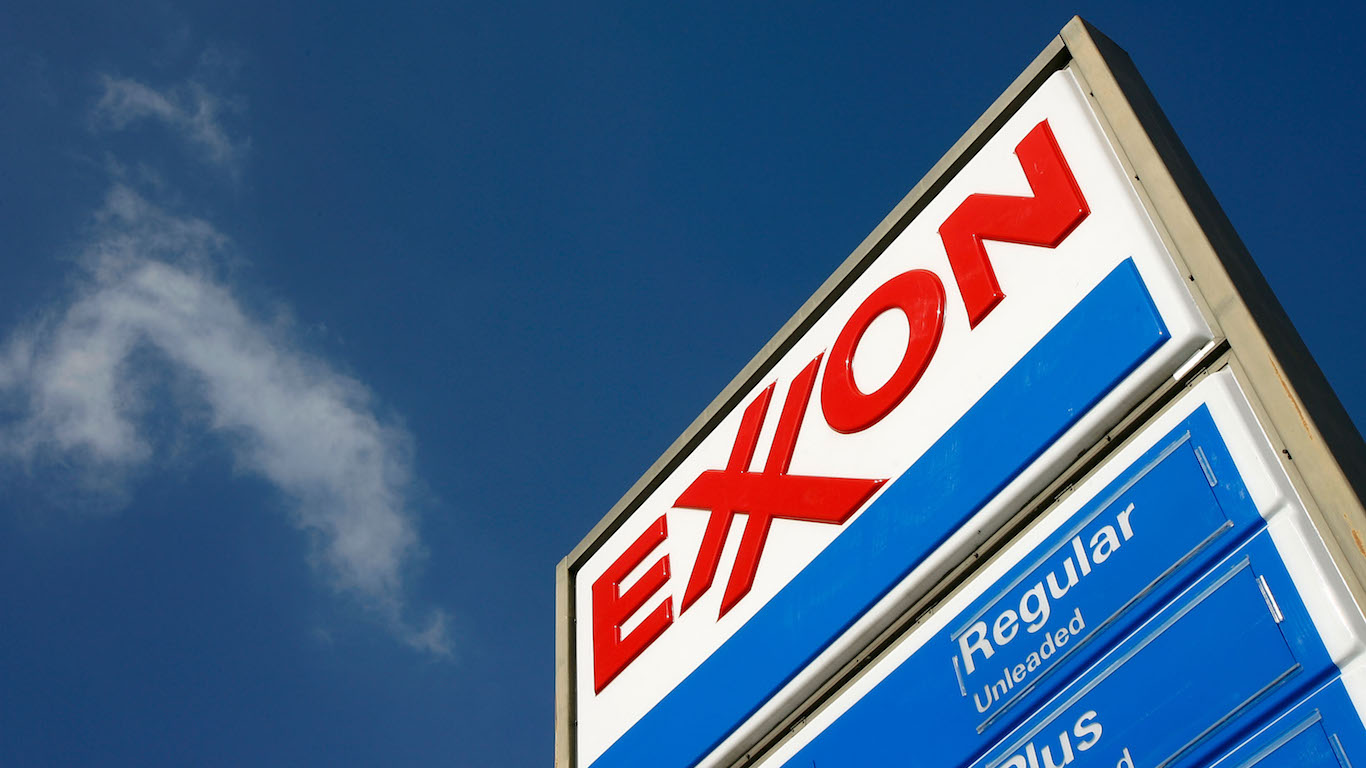
It seems that extremely low oil prices are not killing every energy dividend. Chevron Corp. (NYSE: CVX) recently made its dividend commitment, and its shares surged, even as it lowers capital spending. Now we have a similar announcement by Exxon Mobil Corp. (NYSE: XOM).
The oil and gas giant Exxon announced on Tuesday that it is cutting its 2020 capital spending by some 30%. It is also lowering its cash operating expenses by 15%, as the COVID-19 economy is riddled with low commodity prices, markets in oversupply and weak demand. Exxon previously issued a $33 billion capital spending plan, but the new target for 2020 is closer to $23 billion.
While these cuts are large, Exxon is the larger of the two U.S. majors. Its revenue in 2019 was $255 billion, versus about $140 billion for rival Chevron. The company also warned that it could exercise additional cost reduction options if needed, and it will continue to evaluate the impact that lower demand would bring lower production.
Exxon’s new offshore operations in Guyana will remain a key effort within the company’s long-term growth plans, and ongoing operations on the Liza Destiny production vessel are unaffected. The company’s second phase of field development is also said to remain on target for 2022, as the Liza Unity production vessel is already under construction. That said, the company did disclose that some of the 2020 activities are now being deferred, which could delay additional production.
The Permian Basin had been a big draw for energy companies, but Exxon indicated that the largest share of capital spending cuts would come from there. Reduced activity will come from lower drilling activities and from well completions until market conditions improve. That said, Exxon is claiming that the cuts will not “compromise the scale, functional excellence and cube development advantages that are maximizing resource recovery and value in the Permian.”
One additional cut was the delay of a final investment decision for the Rovuma liquefied natural gas (LNG) project in Mozambique, while the Coral LNG development continues as planned.
Industry refinery output is currently expected to decline along with demand and available storage. The timing of expansion plans for select downstream and chemical facilities also will be adjusted until demand improves. Still, the company expects to meet its $20 billion projected investment in U.S. Gulf Coast manufacturing facilities, and it expects to reach its proposed $50 billion commitments over a five-year period on U.S. investment that had been announced back in 2018.
One issue that has been difficult for oil and gas investors to keep up with is that Exxon has been raising its common stock dividend each year. Even in 2019, the dividend hike that was announced (from $0.82 to the current $0.87 per share per quarter) was its 37th consecutive hike. It now seems obvious that the hikes in prior years were too much, but the economy and demand also has eroded far more than any of the oil giants had planned for.
Darren Woods, Exxon’s board chair and chief executive officer, said:
After a thorough evaluation of the impacts of the pandemic and market conditions, we have worked closely with business partners to plan and execute capital adjustments that preserve long-term value, maximize cost efficiency, and put us in the strongest position when market conditions improve.
The long-term fundamentals that underpin the company’s business plans have not changed — population and energy demand will grow, and the economy will rebound. Our capital allocation priorities also remain unchanged. Our objective is to continue investing in industry-advantaged projects to create value, preserve cash for the dividend and make appropriate and prudent use of our balance sheet.
With Exxon Mobil stock up over 5% at $52.50 on Tuesday morning, its dividend yield is roughly 8.3%. That’s not an easy dividend to maintain solely from operating cash flows, and oil being under $30 per barrel is likely to crush many of the smaller and less stable independent oil and gas exploration companies.
Exxon’s 52-week low was $30.11, and its 52-week high is $83.49.
Take Charge of Your Retirement In Just A Few Minutes (Sponsor)
Retirement planning doesn’t have to feel overwhelming. The key is finding expert guidance—and SmartAsset’s simple quiz makes it easier than ever for you to connect with a vetted financial advisor.
Here’s how it works:
- Answer a Few Simple Questions. Tell us a bit about your goals and preferences—it only takes a few minutes!
- Get Matched with Vetted Advisors Our smart tool matches you with up to three pre-screened, vetted advisors who serve your area and are held to a fiduciary standard to act in your best interests. Click here to begin
- Choose Your Fit Review their profiles, schedule an introductory call (or meet in person), and select the advisor who feel is right for you.
Why wait? Start building the retirement you’ve always dreamed of. Click here to get started today!
Thank you for reading! Have some feedback for us?
Contact the 24/7 Wall St. editorial team.




